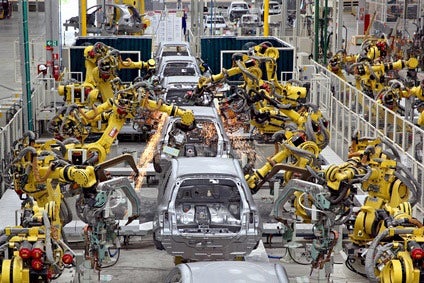
First half domestic sales in Brazil fell 23.2% short of the same period 2021 and were a clear indication 2022 would not see any remarkable recovery.
A second quarter recovery proved insufficient to compensate and did no more than mitigate losses early in the year.
“The global semiconductor crisis keeps marching on, more than we expected,” said national automakers association (Anfavea) president Marcio Leite. “New conditions have arisen due to the Ukraine war and the lockdowns in China triggered by a new covid wave, both affecting raw material supplies and global logistics since we made our last forecast for 2022.”
December 2021 forecasts for 2022, light and heavy vehicles combined, were for domestic sales rising 8.5%, production 9.4% and exports, 3.6%.
In June, production reached 203,600 units, passing the 200,000 mark for the second time this year. In total, 1,092,000 motor vehicles were produced, 5% less than in the first half last year. Yet the second quarter improved by 20% quarter on quarter.
Around 170,000 vehicles were not produced in the first half, according to Anfavea member reports accounting for assembly lines full or partial halted days.
How well do you really know your competitors?
Access the most comprehensive Company Profiles on the market, powered by GlobalData. Save hours of research. Gain competitive edge.

Thank you!
Your download email will arrive shortly
Not ready to buy yet? Download a free sample
We are confident about the unique quality of our Company Profiles. However, we want you to make the most beneficial decision for your business, so we offer a free sample that you can download by submitting the below form
By GlobalDataLower output directly affected new vehicle registrations. June’s tally was 178,100 units, 4.8% lower than May and down 2.4% year on year.
Excluding the extended June national holiday, daily average sales were 8,500 units, the same as in May.
First half sales fell 14.5% year on year.
“Unfortunately, this is a global phenomenon, with very similar falls in the main global markets,” added Leite.
Despite the Argentine economic crisis, first half exports showed signs of recovery. Thanks to increased shipments to Colombia. Chile, Peru, Mexico and Uruguay, 246,000 export units were shipped, 47,300. in June alone, the best monthly result since August 2018.
First half exports rose 23% year on year. By value, H1 shipments rose 33.7% YoY due to orders for more added-value vehicles and help from devaluation of the Brazilian real.
A surprising rise in auto industry employment added 705 new jobs in June and 1,488 so far in 2022. This climbs to 2,700 including heavy construction equipment.
Some these new job posts were due to Ford enlarging its export development and engineering centre in Camacari, Bahia state, next to the factories shut down early this year. Those are highly qualified jobs.
But there was also bad news. Almost 500 employees were dismissed from the Caoa Chery plant in Jacarei, Greater Sao Paulo, which has ceased production.
The Chinese-Brazilian Group had stated it would resume production in 2025 but there was scepticism this would happen.
With major elections, including of Brazil’s president, coming next October, forecasts for the rest of the year have been reviewed.
Anfavea now forecasts growth of 4.1% to 2,340,000 units. Domestic sales are now pegged at 2,140,000 vehicles, imports included, just 1% growth.
Exports are now expected to rise by 22% to 465,000.







